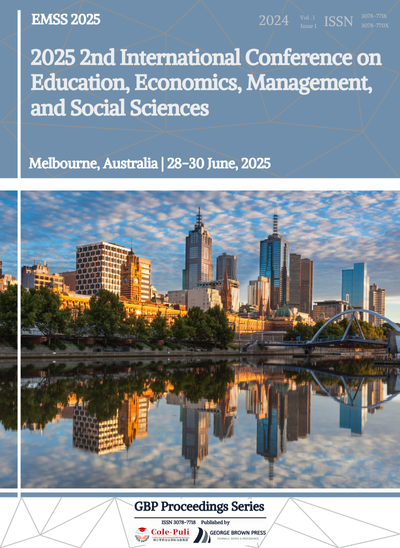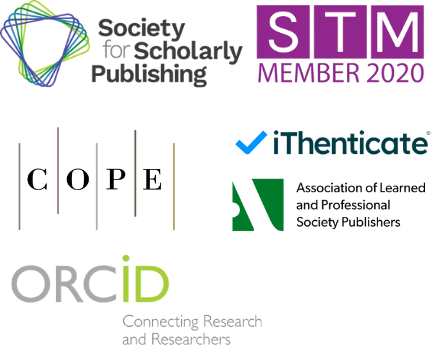Research on the Synergistic Development of China's Two-Way Internationalization under the 'Dual Circulation' New Development Pattern
DOI:
https://doi.org/10.71222/k4zzhh56Keywords:
dual circulation, two-way internationalization, coordinated development, institutional framework, cross-border investmentAbstract
Under the "dual circulation" development paradigm, China faces significant opportunities and challenges in promoting mutual reinforcement and coordinated growth between its domestic and international circulations. This paper first reviews the evolution of the dual-circulation concept and the scholarship on two-way internationalization. Through macro-level data analysis and in-depth case studies of exemplar firms, it then elucidates the current characteristics and dynamics of interaction between China's domestic market and external markets. From the dual perspectives of supply-side structural reform and a shifting global economic environment, the study identifies key constraints — such as mismatches in market demand, insufficient policy coordination, and risks in overseas investment. It then proposes building an integrated institutional framework linking domestic and international circulation, alongside pathways to foster collaborative innovation among enterprises. The findings suggest that by refining cross-border investment policies, strengthening financial support and risk-alert mechanisms, and encouraging coordinated innovation across industry chains, China can enhance its firms' competitiveness and sustainability within international two-way circulation. Finally, the paper outlines detailed policy implementation considerations and directions for future research, offering both theoretical insights and practical guidance for deeper integration of domestic and international circulations.
References
1. S. A. Javed, S. Ahmed, M. Abbas, M. Anwar, M. U. Khattak, A. Muneer et al., "The ‘Dual Circulation’ development model of China: Background and insights," Rajagiri Manag. J., vol. 17, no. 1, pp. 2–20, 2021, doi: 10.1108/RAMJ-03-2021-0016.
2. J. Y. Lin and X. Wang, "Dual circulation: A new structural economics view of development," J. Chin. Econ. Bus. Stud., vol. 20, no. 4, pp. 303–322, 2022, doi: 10.1080/14765284.2021.1929793.
3. J. Y. Lin, "What does China’s ‘dual circulations’ development paradigm mean and how it can be achieved?," China Econ. J., vol. 14, no. 2, pp. 120–127, 2021, doi: 10.1080/17538963.2021.1933053.
4. J.-J. Ou and L.-Y. He, "Opportunity or challenge? Carbon emissions reduction under new development pattern of dual circulation," Sustainability, vol. 15, no. 3, art. 1757, 2023, doi: 10.3390/su15031757.
5. Q. Miao and H. Yin, "Promote the “dual circulation”, build a new development pattern: edited by Jianxing Yu, Hangzhou, Zhejiang People’s Publishing House, 2020, 201 pp., ¥68 (hardcover), ISBN: 9787213100567," J. Chin. Gov., vol. 6, no. 3, pp. 456–460, 2021, doi: 10.1080/23812346.2021.1890418.
6. H. Zhu, R. Liu, B. Chen, X. Zhao, Y. Huang, Z. Wang et al., "The rise of specialized and innovative little giant enterprises under China’s ‘dual circulation’ development pattern: An analysis of spatial patterns and determinants," Land, vol. 12, no. 1, art. 259, 2023, doi: 10.3390/land12010259.
7. K. Jia, "Accelerating the construction of a new development pattern with the domestic circulation as the mainstay and mutual promotion of dual circulation," J. Chin. Econ. Bus. Stud., vol. 21, no. 2, pp. 301–309, 2023, doi: 10.1080/14765284.2021.1929785.
8. Z. Liu, "Demand-Side Reform: A New Mission to Promote the Dual Circulation Development Pattern," Front. Econ. China, vol. 18, no. 3, pp. 324–344, 2023.
9. J. Wang, S. Liu, Y. Zhao, H. Fang, X. Xu, L. Zhang et al., "Spatial–temporal evolution and driving factors of economic dual circulation coordinated development in China’s coastal provinces," Sustainability, vol. 15, no. 14, art. 11009, 2023, doi: 10.3390/su151411009.
10. C. Liu, Y. Chen, Q. Chen, J. Zhou, J. Wang, H. Zhang et al., "Evolution Characteristics and Driving Mechanism of China's Dual Circulation Coordinated Development," Econ. Geogr., vol. 42, no. 11, pp. 1–8, 2022.
Downloads
Published
Issue
Section
License
Copyright (c) 2025 Wenqi Li (Author)

This work is licensed under a Creative Commons Attribution 4.0 International License.



